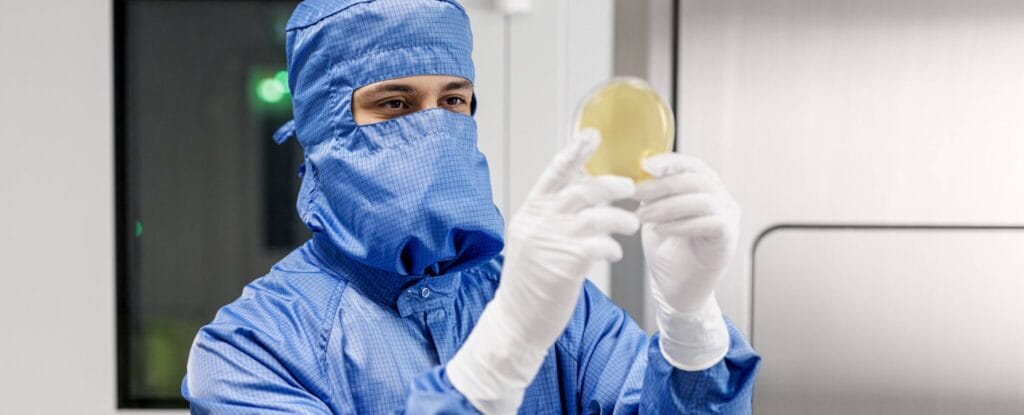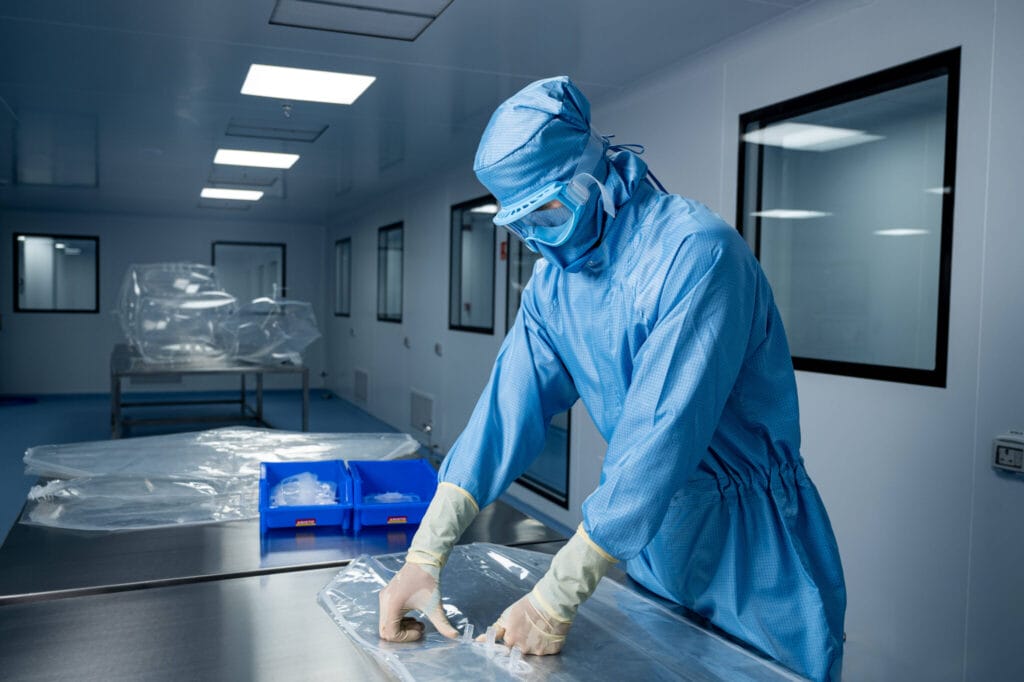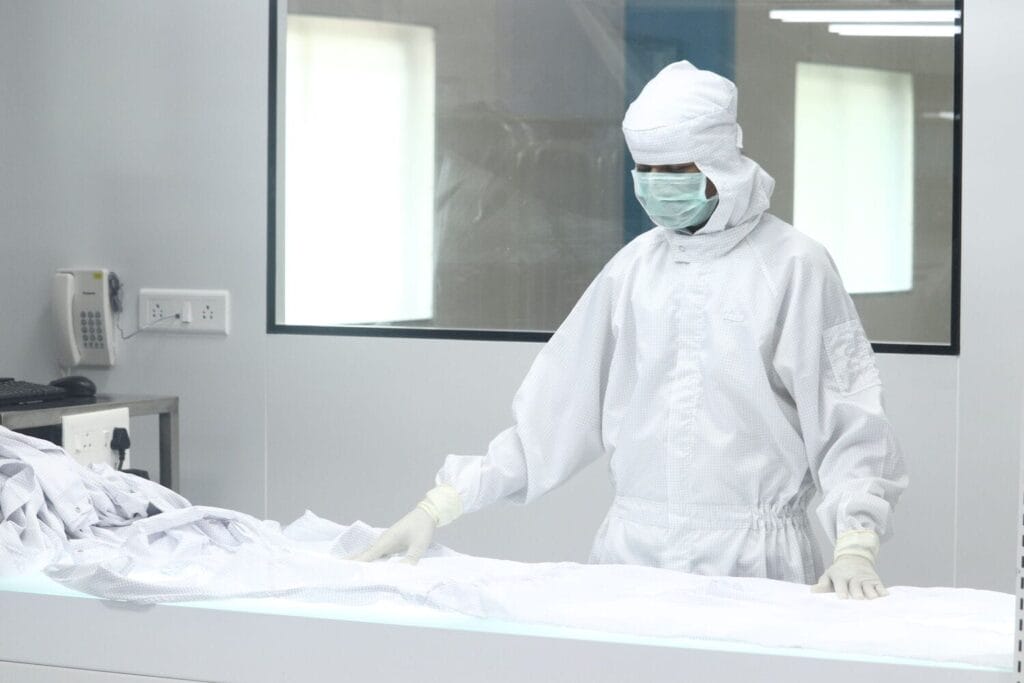
Protective Gears Which Are Very Important for Lab Safety
Safety should always be the number one priority in any laboratory. Ensuring the safety of staff members requires protecting them against different risks. One of these is a lab technician coat and another is a reusable apron which is worn by lab technicians. This report will discuss why such protective clothing is necessary for safety, and how it should be used and maintained.
The Importance of Lab Technician Coats:
Lab technician coats act as both symbols of professionalism and essential safety measures. Here are some reasons why every lab technician or any other person working in a laboratory setting should wear them:
- Protection Against Chemicals: Often labs deal with hazardous chemicals daily. A lab technician coat serves as a barrier through which substances cannot spill or splash onto one’s clothes or body.
- Fire Resistance: The majority of these coats comprise cotton blended with polyester that has some degree of fire resistance; this can greatly come in handy especially where there are inflammable materials within reach.
- Prevention Of Cross-Contamination: Therefore, individuals involved should wear such type of clothing while conducting experiments within labs to help prevent cross-contamination between different samples because, after use throughout the day, they need to remain at the labs so no harmful substances can go out hence preventing cross-contamination.
- Professionalism And Identification: It makes you appear smart since it may have unique features like the laboratories logo which makes it easy to know who belongs there.
Reusable Aprons: Versatile & Beneficial:
Reusable aprons provide an additional layer of protection besides what is covered by lab technician coats. There are several reasons why they are still considered indispensable in many scientific facilities:
- Enhanced Protection: Another alternative to using lab coats would be wearing a reusable apron which also acts as protective gear by reducing the chances of spills or splashes occurring during experiments or when handling hazardous materials.
- Cost Effectiveness: They can be washed over again thus called reusable since this saves money unlike buying disposable ones that increase cost in the long run besides not promoting waste reduction.
- Strong & Durable: Because such an apron is made from hard material unlike those meant for single use which gets damaged easily hence can be used for longer periods thus providing more protection through rough conditions common in laboratories.
Best Practices for Using and Maintaining Lab Technician Coats and Reusable Aprons:
These tips will help you maximize the usage of your safety clothes:
- Regular Cleaning: To prevent contamination, lab technician coats & reusable aprons should always remain clean as directed by the manufacturer so that they stay effective.
- Proper Storage: Keep them in a place where they won’t contaminate other things in the laboratory and make sure the area is always dry.
- Routine Inspection: Check both lab technician coats and reusable aprons frequently to identify what needs to be replaced instantly based on prevailing safety rules.
- Customization for Fit: The garments should fit well without compromising comfort or mobility during the customization process since it enhances movement while working in them.
- Training and Awareness: Make sure that all members of staff receive education on the need to put on protective clothes while at work in the laboratory as well as ways of taking care of them. This makes the lab safety conscious.
Conclusion:
It is necessary to wear appropriate gear like laboratory technician coats and reusable aprons for a safe working environment within the laboratory. These garments protect individuals not only from chemicals or fire but also help prevent cross-contamination and promote a professional outlook. To remain applicable and efficient over time, these precautions should be kept by means of correct usage methods in labs.
Remember, it’s not enough to simply have the right tools; they must be used correctly and consistently when working under safe conditions in labs. Therefore, stick with this instruction to keep your department safe by protecting team members, which will eventually establish a culture of safety within your area.
Frequently Asked Questions (FAQ)
Why are lab technician coats essential for laboratory safety?
Lab coats protect personal clothing and skin of the wearer. They can also act as more of a protective barrier against chemical splashes and certain contaminants. Also, they symbolize professionalism along with adherence to safety protocols in the laboratory environment.
How do reusable aprons make labs safer overall?
Aprons that can be reused offer protection that is supplemental. This is of use during tasks that involve hazardous substances. Designed for resisting chemical penetration and sanitized for repeated use, they promote safety and sustainability.
What materials are recommended for lab coats and aprons?
Due to the fact of their durability and of their chemical resistance, polyester-cotton blends are commonly used materials. For environments with higher fire risks, flame-resistant fabrics are advisable to enhance protection.
How should lab protective gear be maintained?
Lab coats along with aprons must be regularly laundered. It is important for one to be using appropriate disinfectants for maintaining their integrity. It is necessary to inspect them for wear and tear. Substitute them when they no longer offer adequate protection.
Can lab coats and aprons be customized for specific laboratory needs?
Lab protective gear, for ensuring both functionality and safety for all, can be tailored for meeting specific requirements and for incorporating pockets for tools or materials suited for all hazards.
What role in lab protective gear effectiveness does proper fit play?
A well-fitting lab coat or apron ensures complete coverage and hazardous substance exposure risk is kept low. Sizing improves the level of comfort. Thus, adherence to all of the safety practices and to better mobility are allowed.
How does Lindström support laboratories in maintaining protective gear?
Lindström offers complete services including provision, regular laundering, and maintenance of lab protective clothing. Their solutions ensure laboratories have access toward clean, well-maintained gear because it meets safety standards.



